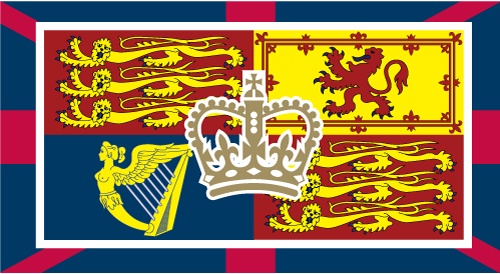There is increasing noise in the media about Scottish independence. With the referendum a mere six months away — September 18, 2014 to be precise — what would the United Kingdom look like without the anchor nation to the north? An immediate consequence would be the need to redraw the UK’s Union Jack flag.
Avid vexillophiles will know that the Union Jack is a melding of the nations that make up the union — with one key omission. Wales does not feature on today’s flag. So, perhaps, if Scotland where to leave the UK, the official flag designers could make up for the gross omission and add Wales as they remove Saint Andrew’s cross, which represents Scotland.
Would-be designers have been letting their imaginations run wild with some fascinating and humorous designs — though one must suspect that Her Majesty the Queen, sovereign of this fair isle is certainly not amused by the possible break-up of her royal domain.
From the Atlantic
Long after the Empire’s collapse, the Union Jack remains an internationally recognized symbol of Britain. But all that could change soon. Scotland, one of the four countries that make up the United Kingdom (along with England, Northern Ireland, and Wales), will hold a referendum on independence this September. If it succeeds, Britain’s iconic flag may need a makeover.
The Flag Institute, the U.K.’s national flag charity and the largest membership-based vexillological organization in the world, recently polled its members and found that nearly 65 percent of respondents felt the Union Jack should be changed if Scotland becomes independent. And after the poll, the organization found itself flooded with suggested replacements for the flag.
“We are not advocating changing the flag. We are not advising changing the flag. We are not encouraging a change to the flag. We are not discouraging a change to the flag,” Charles Ashburner, the Flag Institute’s chief executive and trustee, told me. “We are simply simply here to facilitate and inform the debate if there is an appetite for such a thing.”
“As this subject has generated the largest post bag of any single subject in our history, however,” Ashburner noted, “there is clearly such an appetite.”
The Union Jack’s history is closely intertwined with the U.K.’s history. After Elizabeth I died in 1603, her cousin, King James VI of Scotland, ascended to the English throne as James I of England. With Britain united under one king for the first time, James sought to symbolize his joint rule of the two countries with a new flag in 1606. The design placed the traditional English flag, known as the cross of Saint George, over the traditional Scottish flag, known as the cross of Saint Andrew.
England and Scotland remained independent countries with separate parliaments, royal courts, and flags until they fully merged under the Act of Union in 1707. Queen Anne then adopted James I’s symbolic flag as the national banner of Great Britain. When Ireland merged with Britain in 1801 to form the modern United Kingdom, the British flag incorporated Ireland’s cross of Saint Patrick to create the modern Union Jack. The flag’s design did not change after Irish independence in the mid-20th century because Saint Patrick’s cross still represents Northern Ireland, which remained part of the U.K.
The Union Jack doesn’t represent everyone, though. England, Scotland, and Northern Ireland are included, but Wales, the fourth U.K. country, isn’t. Because Wales was considered part of the English crown in 1606 (with the title “Prince of Wales” reserved for that crown’s heir) after its annexation by England centuries earlier, neither James I’s original design nor any subsequent design based on it bears any influence of the culturally distinct, Celtic-influenced territory.
British authorities granted Wales’ red-dragon flag, or Y Ddraig Goch in Welsh, official status in 1959. But attempts to add Welsh symbolism to the Union Jack haven’t succeeded; in 2007, a member of Parliament from Wales proposed adding the Welsh dragon to the flag, to no avail. Iconography could involve more than just the dragon: Like the U.K.’s other three countries, Wales has a patron saint, Saint David, and a black-and-gold flag to represent him.
If Scotland stays in the U.K., incorporating Wales into the British flag could be as simple as adding yellow borders.
Read the entire article here.
Image: A Royal Standard influenced design for the replacement of the Union Jack should Scotland secede from the United Kingdom. Courtesy of the UK Flag Institute.

